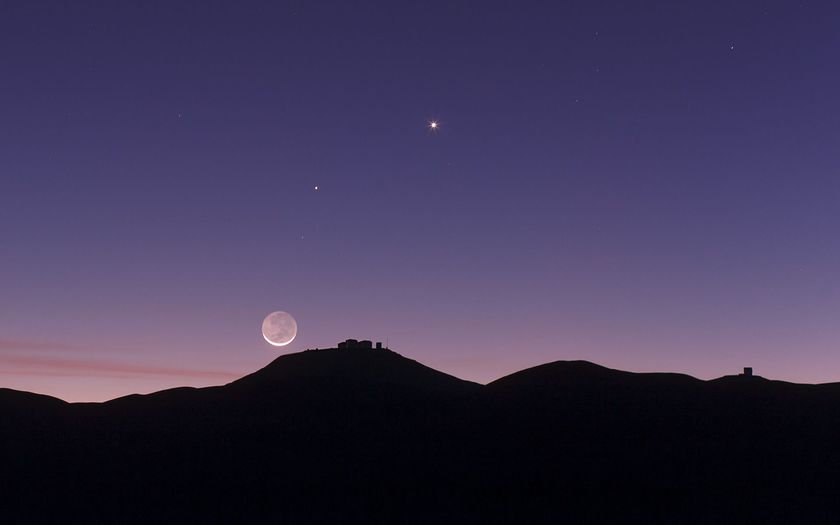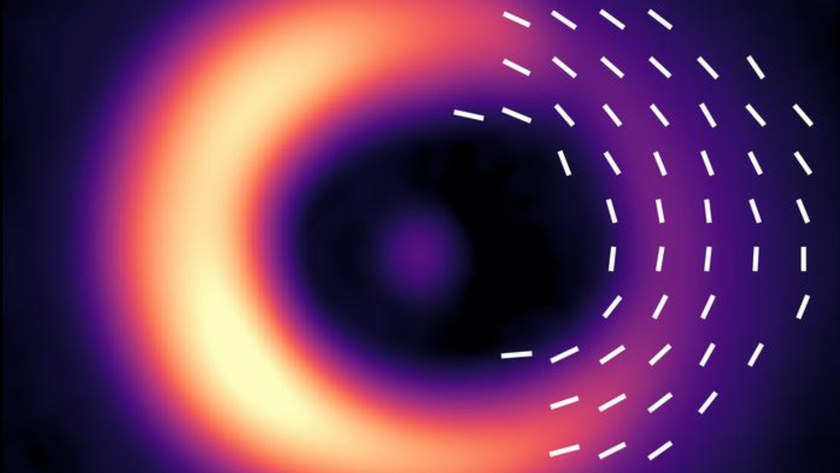Global Warming on Pluto Puzzles Scientists
In what is largely a reversal of an August announcement, astronomers today said Pluto is undergoing global warming in its thin atmosphere even as it moves farther from the Sun on its long, odd-shaped orbit.
Pluto's atmospheric pressure has tripled over the past 14 years, indicating a stark temperature rise, the researchers said. The change is likely a seasonal event, much as seasons on Earth change as the hemispheres alter their inclination to the Sun during the planet's annual orbit.
They suspect the average surface temperature increased about 3.5 degrees Fahrenheit, or slightly less than 2 degrees Celsius.
Pluto remains a mysterious world whose secrets are no so easily explained, however. The warming could be fueled by some sort of eruptive activity on the small planet, one astronomer speculated.
The increasing temperatures are more likely explained by two simple facts: Pluto's highly elliptical orbit significantly changes the planet's distance from the Sun during its long "year," which lasts 248 Earth years; and unlike most of the planets, Pluto's axis is nearly in line with the orbital plane, tipped 122 degrees. Earth's axis is tilted 23.5 degrees.
Though Pluto was closest to the Sun in 1989, a warming trend 13 years later does not surprise David Tholen, a University of Hawaii astronomer involved in the discovery.
"It takes time for materials to warm up and cool off, which is why the hottest part of the day on Earth is usually around 2 or 3 p.m. rather than local noon," Tholen said. "This warming trend on Pluto could easily last for another 13 years."
Get the Space.com Newsletter
Breaking space news, the latest updates on rocket launches, skywatching events and more!
Stellar observations
The conclusion is based on data gathered during a chance passage of Pluto in front of a distant star as seen from Earth. Such events, called occultations, are rare, but two of them occurred this summer.
In the occultations, which are like eclipses, astronomers examined starlight as it passed through Pluto's tenuous atmosphere just before the planet blotted out the light.
The first occultation, in July, yielded limited data because of terrestrial cloud cover above key telescopes. Marc Buie, an astronomer at Lowell Observatory, scrambled to observe the event from northern Chile using portable 14-inch (0.35-meter) telescope. Afterward, Buie said he was baffled by what seemed to be global cooling of Pluto's atmosphere punctuated by some surface warming.
Then on Aug. 20, Pluto passed in front of a different star. The latter event provided much better data captured by eight large telescopes and seems to clarify and mostly reverse the earlier findings.
The results were compared to studies from 1988, the last time Pluto was observed eclipsing a star.
James Elliot of MIT led a team of astronomers who coordinated their observations and presented the findings today at the annual meeting of the American Astronomical Society's (AAS) Division for Planetary Sciences in Birmingham, Ala.
Elliot said the Aug. 20 occultation was the first that allowed such a deep probing of the composition, pressure and the always-frigid temperature of Pluto's atmosphere, which ranges from -391 to -274 degrees Fahrenheit (-235 to -170 degrees Celsius).
Volcanoes on Pluto?
Elliot hinted at the possibility of another factor fueling Pluto's warming trend.
He compared Pluto to Triton, a moon of Neptune. Both have atmospheres made mostly of nitrogen. In 1997, Triton occulted a star and astronomers found that its atmosphere had warmed since the last observations were made in 1989 during the Voyager mission. Back then, Voyager found dark material rising above Triton, indicating possible eruptive activity.
"There could be more massive activity on Pluto, since the changes observed in Pluto's atmosphere are much more severe," Elliot said. "The change observed on Triton was subtle. Pluto's changes are not subtle."
There is no firm evidence that Pluto is volcanically active, but neither is there evidence to rule out that possibility. Even the Hubble Space Telescope can barely make out Pluto's surface.
Elliot added that the process affecting Pluto's temperature is complex. "We just don't know what is causing these effects," he said.
Let's go there
Elliot and others believe this poor understanding of our solar system's tiniest planet is grounds for sending a robot to investigate. Pluto is the only planet not visited by a spacecraft.
NASA has shelved a mission that would explore Pluto and the Kuiper Belt of frozen objects in which it resides.
Congress, however, appears to view the mission as worthy of some funds. A House budget panel this week followed the lead of the Senate in approving $105 million for the mission. If final approval comes, NASA would be compelled to undertake the project.
Interestingly, while Pluto's atmosphere has been growing warmer in recent years, astronomers have argued that a Pluto mission must launch by 2006, lest it miss the opportunity to study Pluto's atmosphere before it completely freezes out for the winter.
Tentative mission plans call for a robotic probe that would not reach Pluto for several years, making a flyby sometime prior to 2020 prior to investigating other objects deeper in the solar system.
Meanwhile, astronomers are looking forward to a space telescope called SOFIA, slated to begin operations in 2004. SOFIA will carry an instrument designed specifically to observe occultations and is expected to be employed when Pluto passes in front of other stars in coming years.
The Pluto observations this summer were funded by NASA, the Research Corporation and the National Science Foundation. Observations were made using the telescopes at the Mauna Kea Observatory, Haleakala, Lick Observatory, Lowell Observatory and the Palomar Observatory.
- Did you know Pluto is not always the 9th Planet?
- More Solar System News
- Astronotes
Join our Space Forums to keep talking space on the latest missions, night sky and more! And if you have a news tip, correction or comment, let us know at: community@space.com.

Rob has been producing internet content since the mid-1990s. He was a writer, editor and Director of Site Operations at Space.com starting in 1999. He served as Managing Editor of LiveScience since its launch in 2004. He then oversaw news operations for the Space.com's then-parent company TechMediaNetwork's growing suite of technology, science and business news sites. Prior to joining the company, Rob was an editor at The Star-Ledger in New Jersey. He has a journalism degree from Humboldt State University in California, is an author and also writes for Medium.


